Discover the Secrets of Ageless Beauty with professionally formulating an Organic Anti-Aging Cream
Are you in search of the ultimate solution for ageless beauty? Look no further! Unveil the secrets of organic anti-wrinkle face creams that will rejuvenate your skin and give you a youthful glow.
Your Journey to Ageless Beauty
Our comprehensive guide will take you on a journey through the world of organic anti-aging face creams. Discover the science behind their mechanisms, learn about the key ingredients, and understand how they work to improve your skin’s elasticity and firmness. With the right knowledge and products, you can rejuvenate your skin and enjoy a youthful glow.
Ready to start your journey to ageless beauty? Embrace the power of organic anti-aging face creams and let your skin shine with youth and vitality.
Before exploring organic anti-aging face creams, it’s essential to understand the aging process and how wrinkles form. Wrinkles result from decreased collagen production, loss of skin elasticity, and repetitive facial movements. As we age, our skin loses moisture and essential proteins like collagen and elastin, leading to fine lines, especially in thinner skin areas like around the eyes and mouth. External factors like sun exposure, smoking, and poor skincare habits also contribute to wrinkle formation.
Embrace the Power of Organic Anti-Aging Face Creams
Wrinkles are a natural part of aging, but that doesn’t mean we can’t fight back. With the right organic anti-aging face cream, you can reduce the appearance of wrinkles, fine lines, and sagging skin, effectively turning back the clock.
The Science behind the Magic
Understanding how these ingredients work can help you make informed choices. Humectant draws moisture to the skin, reducing the appearance of fine lines. Collagen boosters enhance your skin’s structural integrity, while antioxidants neutralize harmful free radicals, preventing premature aging.
Key Ingredients for Youthful Skin
Let’s explore the key ingredients that make organic anti-aging face creams so effective:
- Humectants: Known for its incredible hydrating properties, hyaluronic acid a popular humectant helps to retain moisture, keeping your skin plump and hydrated.
- Collagen Boosters: These ingredients stimulate collagen production, improving your skin’s elasticity and firmness.
- Powerful Antioxidants: Antioxidants protect your skin from free radical damage, promoting a healthy and youthful complexion.
A Holistic Approach to Skincare
To achieve the best results, it’s essential to adopt a holistic approach to skincare. This means addressing both internal and external factors. Protect your skin from sun exposure, avoid smoking, and maintain a healthy skincare routine to complement the benefits of organic anti-aging face creams.
A holistic approach to skincare, addressing both internal and external factors, is crucial for the best results.
Why Choose Organic Anti-Aging Cream?
Organic anti-wrinkle face creams offer numerous benefits. They are gentle on the skin, free from harmful chemicals, and rich in nutrients that nourish your skin deeply. Plus, they are environmentally friendly, supporting a sustainable future.
Choosing the right anti-aging face cream involves understanding the differences between organic and synthetic options.
Organic Anti-Aging Face Creams are:
- Made from natural, plant-derived ingredients such as botanical extracts, essential oils, and plant-based oils.
- Free from synthetic chemicals, parabens, and artificial fragrances.
- Preferred by those seeking a natural approach to skincare.
Synthetic Anti-Aging Face Creams are:
- Formulated with lab-created ingredients, including synthetic preservatives, fragrances, and chemicals.
- Often chosen for their longer shelf life and potentially faster results.
- The long-term effects on skin and overall health are still debated.
Understanding these differences helps you make an informed choice that aligns with your values and skincare needs.
Organic anti-aging face creams are a popular choice for skincare enthusiasts due to their numerous benefits:
- Gentle on the Skin: Organic creams are generally milder and better tolerated by all skin types, including sensitive skin, reducing the risk of irritation and allergic reactions.
- Free from Harmful Chemicals: These creams avoid harmful chemicals like parabens, sulphates, and artificial fragrances, minimising exposure to substances linked to health issues and promoting overall skin health.
- Rich in Nutrients: they are packed with nutrient-rich botanical extracts, essential oils, and plant-based oils, organic creams provide vitamins, minerals, antioxidants, and fatty acids that nourish the skin, improve texture, boost collagen, and enhance overall appearance.
- Environmentally Friendly: Organic farming practices prioritize sustainability and reduce harmful pesticide use, benefiting both your skin and the environment. Supporting organic brands helps promote a greener, more sustainable future.
Understanding the Role of Anti-Aging Cream
Regular use of anti-aging cream offers numerous benefits for your skin. Here are the key advantages:
- Reduces Fine Lines and Wrinkles: Anti-aging products are formulated with natural ingredients rich in vitamins and nutrients that help minimize fine lines and support collagen synthesis, preventing wrinkles.
- Prevents Age Spots: These products have intense moisturizing and nourishing properties that strengthen the skin’s natural lipid barrier and prevent moisture loss. They boost collagen production, lighten age spots, even out skin tone, and give a youthful glow.
- Protects Against Sun Damage: High-quality anti-aging products add a protective layer to your skin, shielding it from UV rays. This protection helps prevent free radical damage and photoaging, reducing early signs of aging like sagging skin, uneven tone, and hyperpigmentation.
- Improves Skin Elasticity and Firmness: Anti-aging skincare revitalizes dull and lifeless skin, making it smooth, soft, and naturally glowing. It provides essential nourishment to boost skin elasticity and firmness, keeping it youthful and healthy.
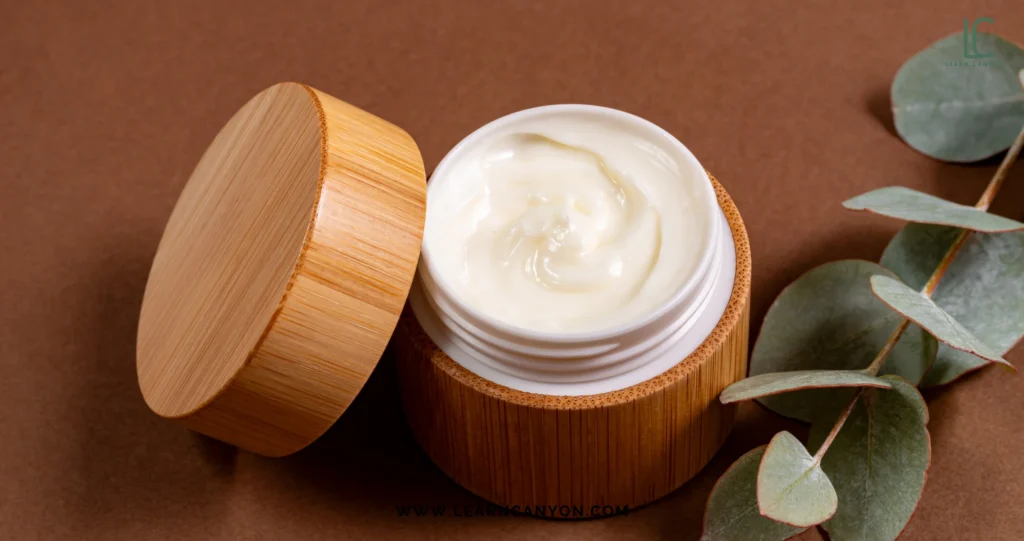
Can an organic anti-aging cream complement other skincare products?
Why? Definitely yes. An organically formulated anti-aging cream is a crucial component of a comprehensive skincare routine and it works most effectively when combined with other products.
- Foundation: While not technically a skincare product, foundation can enhance the appearance of smoother skin. An anti-aging cream creates a smoother canvas for foundation application, resulting in a more even and flawless finish.
- Moisturizer: Hydrated skin is essential for a youthful appearance. An anti-aging cream often incorporates moisturizing ingredients, but combining it with a dedicated moisturizer can provide extra hydration and plumpness.
- Serum: Serums deliver concentrated doses of active ingredients directly to the skin. An anti-aging cream can help lock in the serum’s benefits and provide additional hydration.
- Sunscreen: Protecting your skin from harmful UV rays is crucial for preventing premature aging. An anti-aging cream can help repair existing damage, but sunscreen prevents future damage.
By combining an organic anti-aging cream with these other products, you create a skincare regimen that addresses multiple concerns and maximizes results.
Key Ingredients in Organic Anti-Aging Face Cream
When shopping for organic anti-aging face creams, it’s important to familiarize yourself with the key ingredients that make these products effective. Here are some ingredients to look for that have been proven to combat wrinkles and promote youthful-looking skin.
The Ultimate Guide to Key Ingredients in Organic Anti-Aging Face Cream
Understanding the key ingredients that make these products effective is essential. Here are some proven ingredients that are used to combat wrinkles and promotes youthful-looking skin.
Humectants: Retains moisture to keep skin plump and hydrated, reducing dryness and wrinkles.
Collagen Boosters: Ingredients like peptides, vitamin C, and retinol stimulate collagen production, improving skin elasticity and reducing wrinkles.
Powerful Antioxidants: Vitamin E, green tea extract, and rosehip oil neutralize free radicals, preventing oxidative stress and minimizing wrinkles.
Natural Moisturizers: Shea butter, jojoba oil, and coconut oil provide deep hydration, nourishing the skin and improving texture.
Incorporating these ingredients into your skincare routine, along with natural remedies and lifestyle changes, can help you achieve healthier, more youthful-looking skin. Consistency and patience are key to aging gracefully.
Your skin deserves the best, and with the right organic product formulation, you can nourish, rejuvenate, and restore its natural radiance.
The right ingredients can make all the difference. Here are a few commonly used:
Hyaluronic Acid: provides hydration and can be obtained from Natural Sources.
Hyaluronic acid is essential for hydration. It helps your skin retain moisture. Natural sources include soybeans and root vegetables. Hydrated skin looks plumper and feels smoother.
Active ingredients like Retinol Alternatives are commonly suggested. You can use natural substitutes like Bakuchiol.
Many times retinol is avoided by formulators due to skin irritation. Bakuchiol is a great natural alternative. It offers similar anti-aging benefits without being a skin irritant.
Antioxidants: Antioxidants are essential for safeguarding your skin. They attack free radicals. Ingredients such as vitamin C, vitamin E, and green tea extract are incorporated into formulations for the antioxidant effects which help enhance skin texture and tone.
Essential Oils:
Essential oils can provide numerous benefits like anti-aging, moisturising, nutritious to your skin. Many oils like Rosehip oil contains anti-aging effects. Argan oil contains fatty acids that moisturize your skin. Jojoba oil mimics the skin’s natural oils, making it suitable for all skin types.
Additional Botanicals that complement the anti-aging ingredients can be used for creating a soothing and restorative environment for the skin.
- Aloe Vera: Known for its cooling and hydrating properties, aloe vera soothes irritated skin and promotes healing.
- Chamomile: With anti-inflammatory benefits, chamomile calms redness and reduces skin sensitivity.
- Rosehip Oil: Rich in vitamins and antioxidants, it helps with skin regeneration and reduces the appearance of fine lines.
- Vitamin E: A potent antioxidant that protects skin from damage and promotes healing.
- Green Tea: Packed with antioxidants, it helps combat free radicals and reduces inflammation.
By focusing on these essential ingredients, you can choose the best organic ingredients to formulate your anti-aging cream.
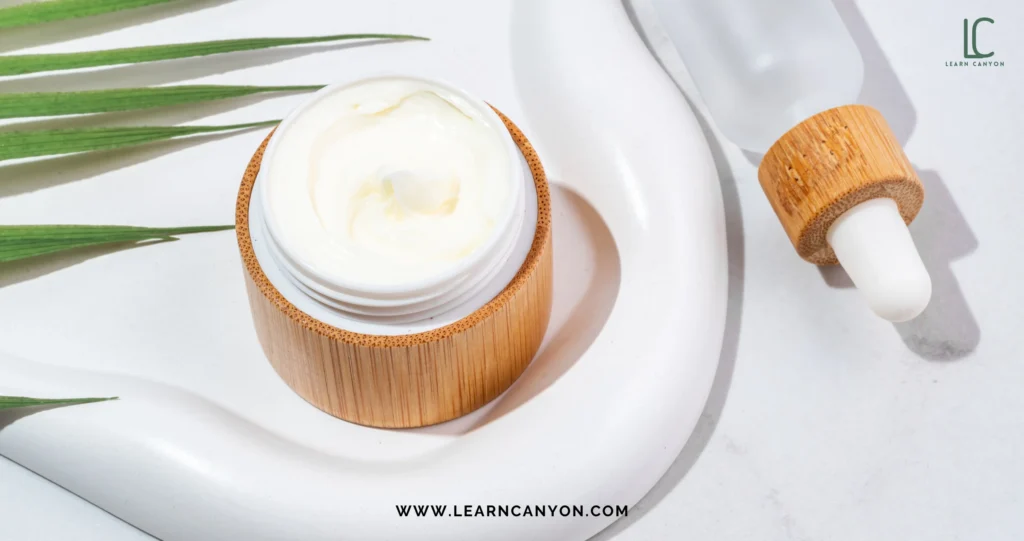
Ingredient Breakdown and Percentages
| Ingredient | Range |
| Water Phase | 50-70% |
| Total Oil Phase | 15-30% |
| Carrier Oils (nourishing and moisturizing) | 5-10% |
| Butters (emollient and rich in nutrients) | 3-10% |
| Emulsifiers | 3-7% |
| Humectants | 3-8% |
| Anti-Aging Actives | 5-10% |
| Botanical Extracts | 2-5% |
| Essential Oils | 0.1-0.5% |
| Preservatives | 0.5-1% |
Here are some of the ingredients that can be used in any organic anti-aging cream:
The Water Phase:
Distilled Water: it is generally used as a main vehicle for the water phase of the emulsion. It provides the product with the desired hydration.
Aloe Vera Juice: Soothing, hydrating, and anti-inflammatory properties help to calm the skin, reduce redness, and provide moisture.
The Oil Phase:
The Oil Phase which may comprise of 15-30% of the emulsion formulation, some ingredients are listed below:
The ingredients which work synergistically in an anti-aging cream to provide comprehensive benefits are mentioned below.
Carrier Oils (Nourishing and Moisturizing)
- Uses: Provide essential fatty acids, vitamins, and antioxidants that nourish and moisturize the skin. They help to maintain the skin’s natural barrier, improve elasticity, and reduce the appearance of fine lines and wrinkles.
- Examples: Jojoba Oil, Rosehip Oil
Jojoba Oil (5-10%)
- Uses: Mimics the skin’s natural sebum, providing moisturizing and anti-inflammatory benefits. It helps balance oil production and enhances skin elasticity.
Rosehip Oil (5-10%)
- Uses: Rich in essential fatty acids and antioxidants, it helps to regenerate skin cells, improve skin texture, and reduce the appearance of scars and fine lines.
Butters (Emollient and Rich in Nutrients)
- Uses: Act as emollients, providing deep hydration and locking in moisture. They are rich in vitamins and fatty acids that nourish the skin, improve texture, and enhance skin elasticity.
- Examples: Shea Butter, Cocoa Butter
Shea Butter (5-10%)
- Uses: Highly moisturizing and rich in vitamins A and E, shea butter helps to nourish the skin, improve elasticity, and reduce the appearance of wrinkles.
Cocoa Butter (5-10%)
- Uses: Deeply hydrating and rich in antioxidants, cocoa butter helps to improve skin elasticity and tone, reduce stretch marks, and provide a smooth texture.
Emulsifiers (3-7%)
- Uses: Blend oil and water components in the cream, creating a smooth, stable, and homogeneous texture. They help to ensure that the active ingredients are evenly distributed throughout the product.
- Examples: Cetearyl Alcohol and Cetearyl Glucoside, Glyceryl Stearate
Cetearyl Alcohol and Cetearyl Glucoside (3-5%)
- Uses: Emulsifiers that help to blend oil and water components, creating a smooth and stable cream texture. They also provide moisturizing and conditioning effects.
Glyceryl Stearate (2-4%)
- Uses: Acts as an emulsifier and skin conditioning agent, providing a creamy consistency and helping to retain moisture in the skin.
Humectants (3-8%)
- Uses: Attract and retain moisture in the skin, keeping it hydrated and plump. They help to improve the skin’s barrier function and enhance the effectiveness of moisturizers.
- Examples: Glycerin, Hyaluronic Acid
Glycerin (3-5%)
- Uses: A powerful humectant that attracts and retains moisture in the skin, keeping it hydrated and plump.
Hyaluronic Acid (1-3%)
- Uses: A potent humectant that can hold up to 1000 times its weight in water, providing deep hydration and plumping the skin to reduce the appearance of fine lines and wrinkles.
Anti-Aging Actives (5-10%)
- Uses: Target specific signs of aging such as fine lines, wrinkles, and loss of firmness. They stimulate collagen production, protect against free radical damage, and improve skin texture and tone.
- Examples: Vitamin C, Niacinamide, Coenzyme Q10
Vitamin C (3-5%)
- Uses: An antioxidant that helps to brighten the skin, even out skin tone, and stimulate collagen production, reducing the appearance of fine lines and wrinkles.
Niacinamide (2-5%)
- Uses: Improves skin elasticity, enhances the barrier function, evens skin tone, and diminishes dullness and fine lines.
Coenzyme Q10 (1-3%)
- Uses: An antioxidant that helps to protect the skin from oxidative stress, boosts collagen production, and improves the appearance of fine lines and wrinkles.
Botanical Extracts (2-5%)
- Uses: Provide additional benefits such as soothing, anti-inflammatory, and antioxidant properties. They help to protect the skin from environmental damage, reduce redness, and promote a more even skin tone.
- Examples: Green Tea Extract, Licorice Root Extract
Green Tea Extract (1-3%)
- Uses: Rich in antioxidants, it helps to protect the skin from free radical damage, reduce inflammation, and soothe irritated skin.
Licorice Root Extract (1-2%)
Uses: Contains anti-inflammatory and skin-brightening properties, helping to reduce hyperpigmentation and even out skin tone.
Essential Oils (0.1-0.5%)
- Uses: Enhance the sensory experience with pleasant aromas and provide additional therapeutic benefits. They can soothe the skin, reduce inflammation, and promote relaxation.
- Examples: Lavender Oil, Frankincense Oil
Lavender Oil (0.1-0.3%)
- Uses: Provides a soothing aroma, reduces inflammation, and has antiseptic properties that help to calm and heal the skin.
Frankincense Oil (0.1-0.3%)
- Uses: Known for its anti-aging and anti-inflammatory properties, it helps to tone and lift the skin, reduce the appearance of scars and wrinkles, and promote cellular regeneration.
Preservatives (0.5-1%)
- Uses: Protect the product from microbial contamination, ensuring its safety and longevity. They prevent the growth of bacteria, yeast, and mold, extending the shelf life of the cream.
- Examples: Leucidal (natural preservative), Geogard (broad-spectrum preservative)
Leucidal (Natural Preservative)
- Uses: A natural antimicrobial preservative derived from radish root ferment, it helps to protect the cream from microbial contamination without harmful side effects.
Geogard (Broad-Spectrum Preservative)
- Uses: Provides broad-spectrum preservation, protecting the product from bacteria, yeast, and mold, ensuring its safety and longevity.
Carrier oils and butters offer deep nourishment and hydration, while emulsifiers ensure a smooth texture. Humectants retain moisture, and anti-aging actives target specific aging signs. Botanical extracts provide additional skin benefits, essential oils enhance the sensory experience, and preservatives ensure product safety and longevity. Together, they create a powerful anti-aging formulation that addresses multiple aspects of skin health and aging.
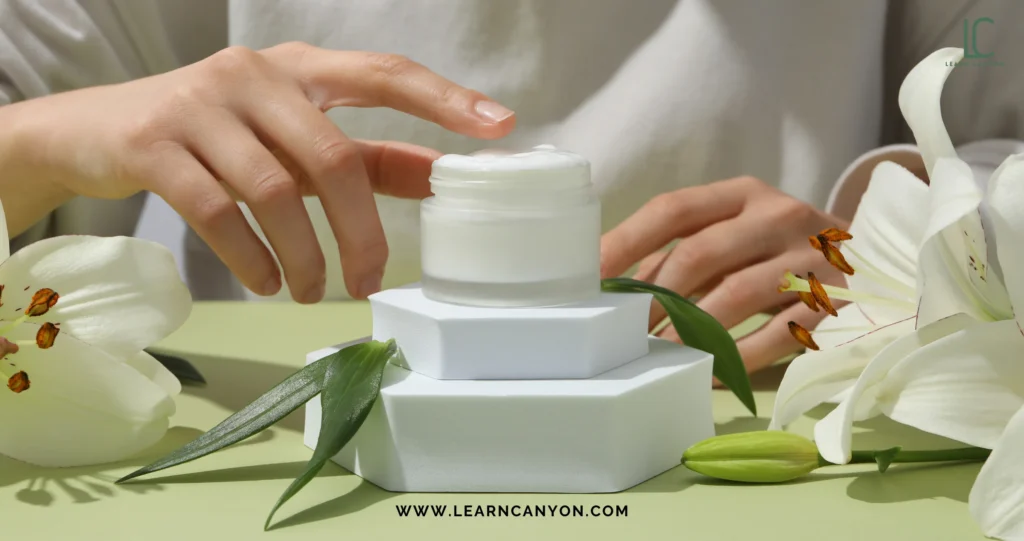
Step-by-Step Formulation Process
Sanitation and Preparation of workspace: Maintaining a clean workspace and sanitised equipment is crucial.
It is crucial to Prevent Contamination when manufacturing any cream.
It is important to control Microbial Contamination. Bacteria, fungi, and other microorganisms can easily contaminate cosmetic products, leading to spoilage and potential health risks for consumers.
Another major contributor of contamination is Cross-Contamination. Residual materials from previous batches can contaminate new products, compromising their purity and efficacy.
Clean equipment and workspaces ensure that each batch of product is consistent in quality and performance, maintaining the brand’s reputation.
Workspace Preparation can be done by following the points mentioned below:
- Clean Surfaces: Regularly clean and disinfect all surfaces, including countertops, floors, and storage areas.
- Air Quality Control: Use HEPA filters and maintain proper ventilation to reduce airborne contaminants.
- Personal Hygiene: Workers should adhere to strict personal hygiene standards, including wearing clean uniforms, hairnets, and gloves.
- Cleaning Protocols: Implement standard operating procedures (SOPs) for cleaning and sanitizing equipment before and after use.
- Proper Storage: Store raw materials and finished products in clean, sanitary conditions to prevent contamination.
- Labeling and Segregation: Clearly label and segregate cleaned equipment and raw materials from those that are yet to be cleaned to avoid cross-contamination.
Through rigorous cleaning practices, proper storage and regular monitoring you ensure high standards of hygiene and safety in the production processes.
Starting the Manufacturing process:
Sterilise all the equipment appropriately.
Accurately measure all the liquids and weigh the dry ingredients.
All the ingredients are added to the separate beaker according to the phase in which they belong, that is water phase and the oil phase.
Keep the active ingredients and the essential oils weighed separately and ready to be used.
Now heat the ingredients of water and oil phases simultaneously to reach the temperature up-to 70 to 72 degrees Celsius.
Add oil phase to the water phase with constant stirring using a suitable homogenizer.
Let the homogenised mixture cool to 45 degree Celsius and now add the remaining ingredients.
The pH of this formulation should be around the normal pH of the skin that is 5.5
If the pH is not like desired we need to adjust it with a weak acid or weak base as may be necessary.
Once the cream is properly cooled to room temperature fill it in a wide mouthed clean and dry container.
Label the container with the product name and date of manufacture among other details like active ingredients.
Store it in a clean dry place protected from direct sunlight.
Tips for Customizing Your Cream
When customizing an anti-aging cream selecting and adjusting ingredients can be done based on specific skin types and targeted concerns. By experimenting with various oils, butters, humectants, actives, and essential oils, you can formulate a product that addresses individual needs effectively. Ensuring proper balance and compatibility of these ingredients is key to creating a successful and effective anti-aging cream.
When adjusting Ingredients Based on Skin Type
For Dry Skin: make use of
- Oils: use richer and nutritious oils like Avocado Oil and Olive Oil.
- Butters: Shea Butter and Cocoa Butter provide deep hydration.
- Humectants: Increase the concentration of Glycerin and Hyaluronic Acid to enhance moisture retention.
For Oily Skin: make use of
· Oils: Use lighter oils like Jojoba Oil and Grapeseed Oil.
- Humectants: Niacinamide helps regulate sebum production.
- Actives: Include Salicylic Acid for its exfoliating and anti-inflammatory properties.
For Sensitive Skin: make use of
- Oils: Use gentle oils like Jojoba Oil and Calendula Oil.
- Botanical Extracts: Green Tea Extract and Chamomile Extract provide soothing benefits.
- Actives: Avoid potentially irritating ingredients and opt for soothing agents like Allantoin.
Combination Skin: make use of
- Oils: Balance lighter oils (Jojoba Oil) with richer oils (Argan Oil) for targeted areas.
- Humectants: Use a balanced amount of Glycerin and Hyaluronic Acid.
- Actives: Niacinamide can help manage oil production and hydration balance.
When adding special active ingredients for Targeted Concerns
Fine Lines and Wrinkles:
- Vitamin C: Promotes collagen production and brightens the skin.
- Retinol: Powerful anti-aging ingredient that reduces wrinkles and fine lines.
- Peptides: Stimulate collagen synthesis and improve skin elasticity.
Hyperpigmentation:
- Niacinamide: Reduces the appearance of dark spots and evens out skin tone.
- Licorice Root Extract: Brightens the skin and reduces hyperpigmentation.
- Vitamin C: Helps to lighten dark spots and improve skin radiance.
Sagging skin:
- Coenzyme Q10: Boosts collagen production and firms the skin.
- Peptides: Enhance skin firmness and elasticity.
- Green Tea Extract: Provides antioxidant protection and improves skin resilience.
Other ways of Experimenting with the formulation is by using different base ingredients like Oils, Butters or Essential Oils
Oils:
- Argan Oil: Rich in essential fatty acids and vitamin E, it nourishes and protects the skin.
- Squalane: Lightweight oil that mimics skin’s natural sebum, suitable for all skin types.
Butters:
- Mango Butter: Provides intense hydration and helps to smooth the skin.
- Kokum Butter: Non-comedogenic and rich in essential fatty acids, great for hydration without clogging pores.
Essential Oils:
- Rosemary Oil: Has antioxidant properties and stimulates circulation.
- Geranium Oil: Balances oil production and promotes healthy skin.
- Chamomile Oil: Soothes sensitive skin and reduces redness.
Testing and Quality Control: making sure the product withstands the quality through out its lifespan is important and this can be achieved by performing various physical and chemical test to ensure the quality of the product.
The formulations must retain the colour, odour and physical form throughout the shelf life when unopened and as well as in use.
The stability of the product is proved when the cream does not separate at different temperatures that is called “accelerated testing” under which it may be used, stored or is transported and the emulsion maintains its stability, colour and odour.
Conducting patch tests for safety: It is always important to conduct patch test when using any product for the first time. For patch test apply the product over a square inch of the skin on the inner side of the wrist. If there is no irritation or reddening of the skin after 24 hrs of use the product is considered safe for use.
It is usual practice of professional formulators to store samples of the prepared formulations on the shelf under normal conditions at room temperature for a period equivalent to the shelf life so as to observe any physical or chemical changes.
Conclusion
Creating an effective organic anti-aging face cream involves understanding the aging process, selecting key ingredients that target specific skin concerns, and meticulously following formulation and quality control procedures. By using a blend of humectants, collagen boosters, antioxidants, natural moisturizers, and essential oils, you can develop a product that reduces the appearance of fine lines, wrinkles, and sagging skin, while also enhancing skin elasticity and firmness.
Incorporating good manufacturing practices (GMP’s) into your formulation process can help you create a powerful and effective organic anti-aging face cream that nourishes, rejuvenates, and restores the skin’s natural radiance, promoting a youthful glow and ageless beauty.


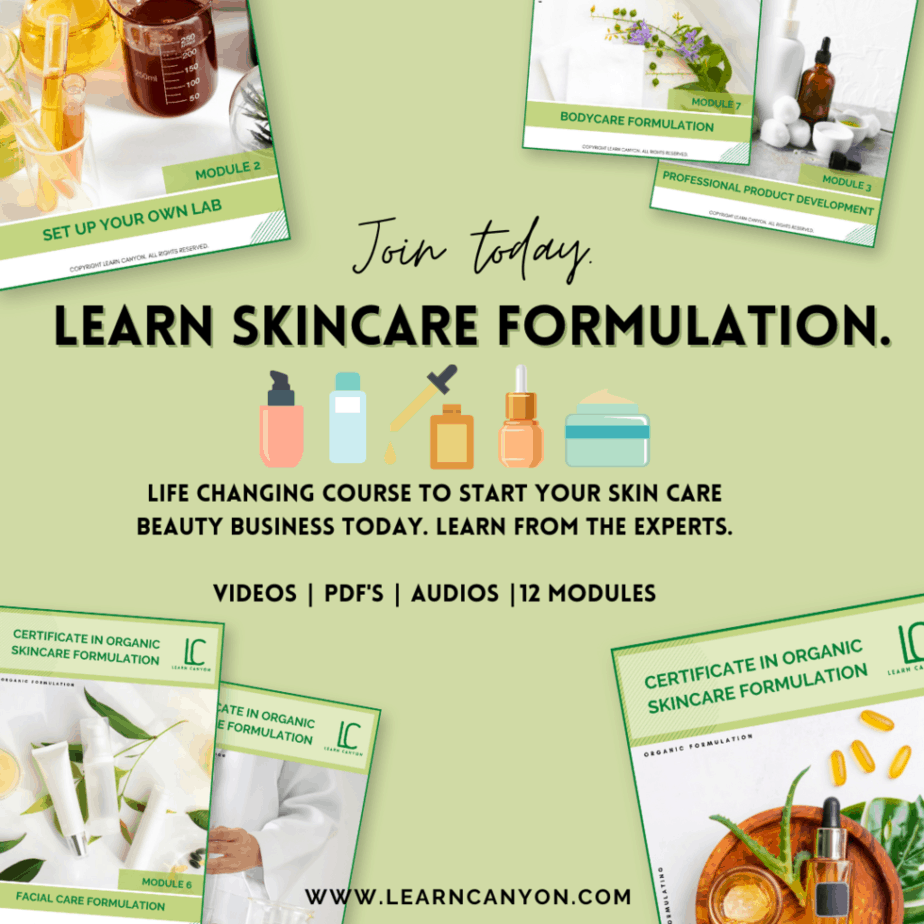
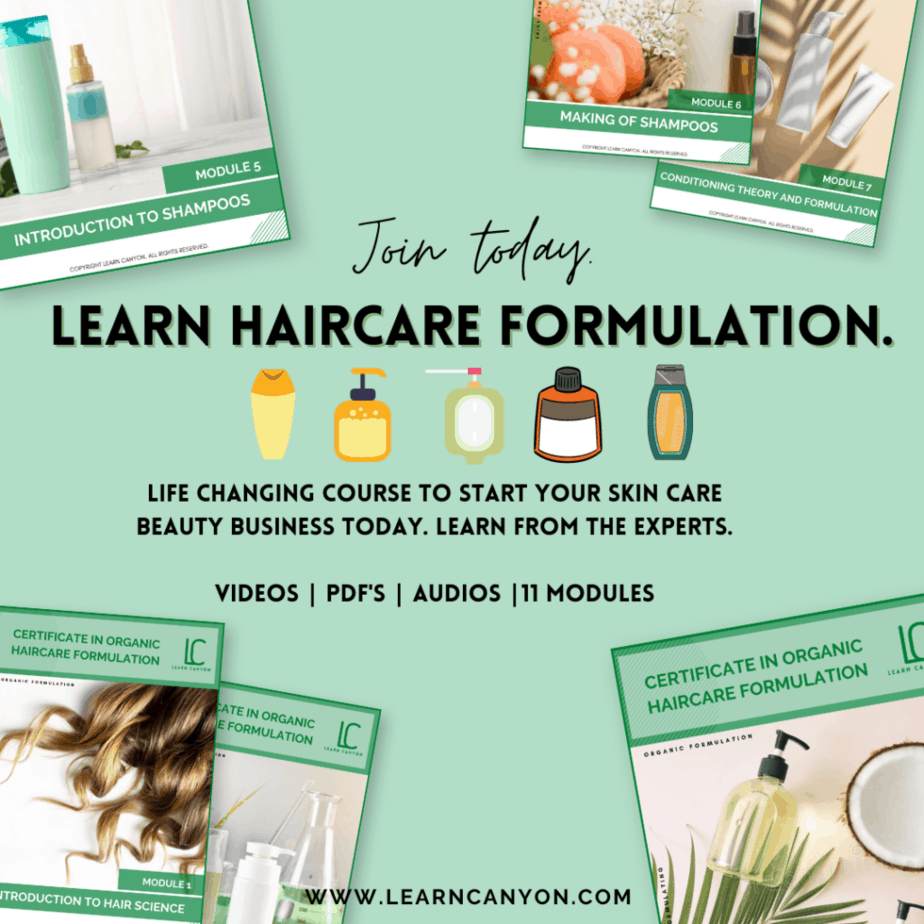
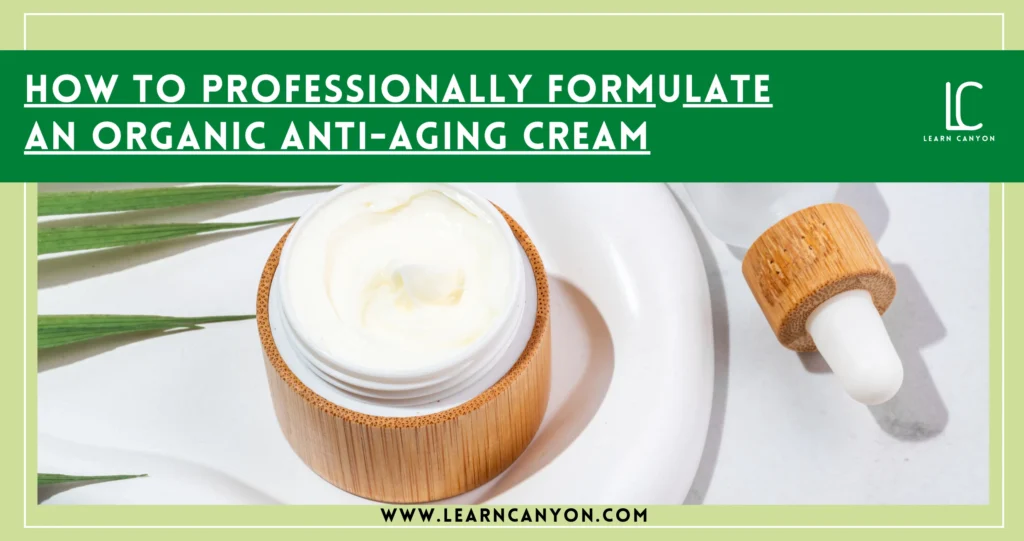
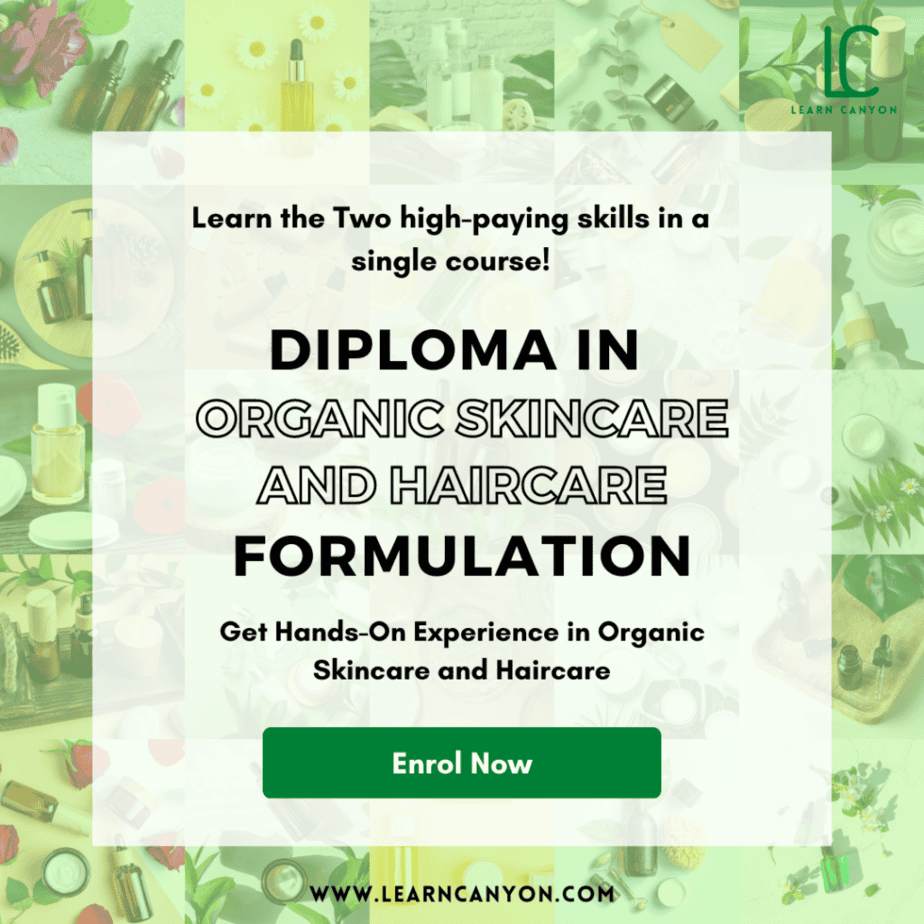
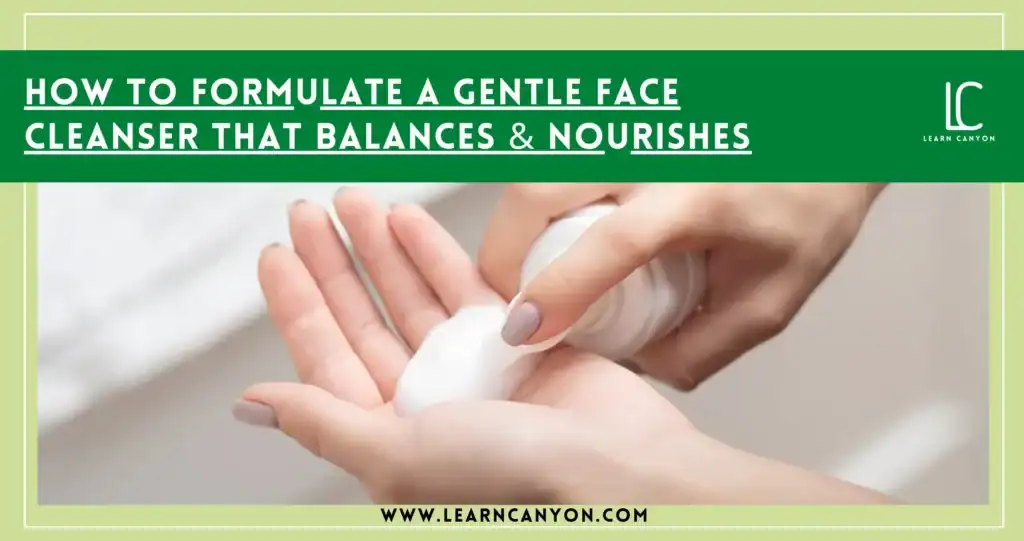
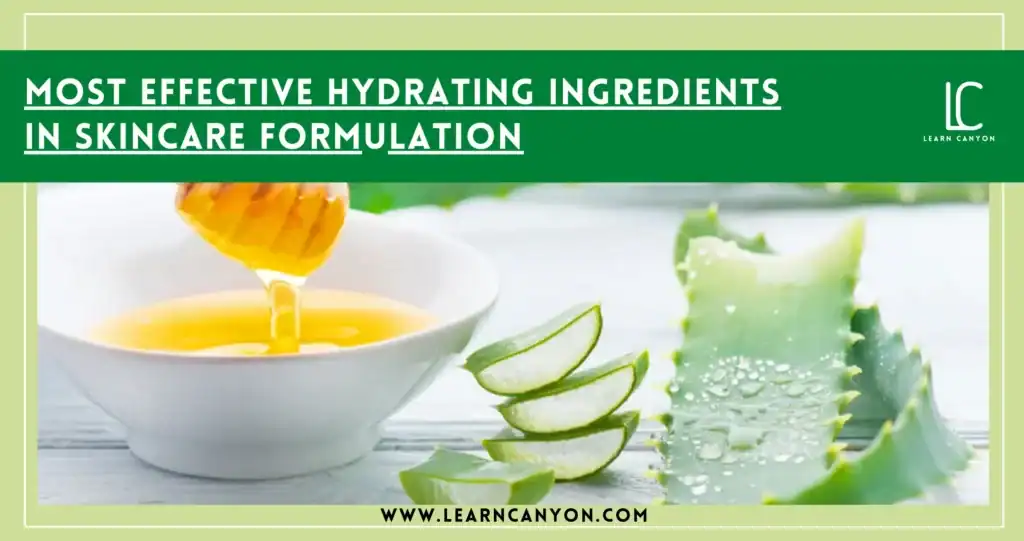
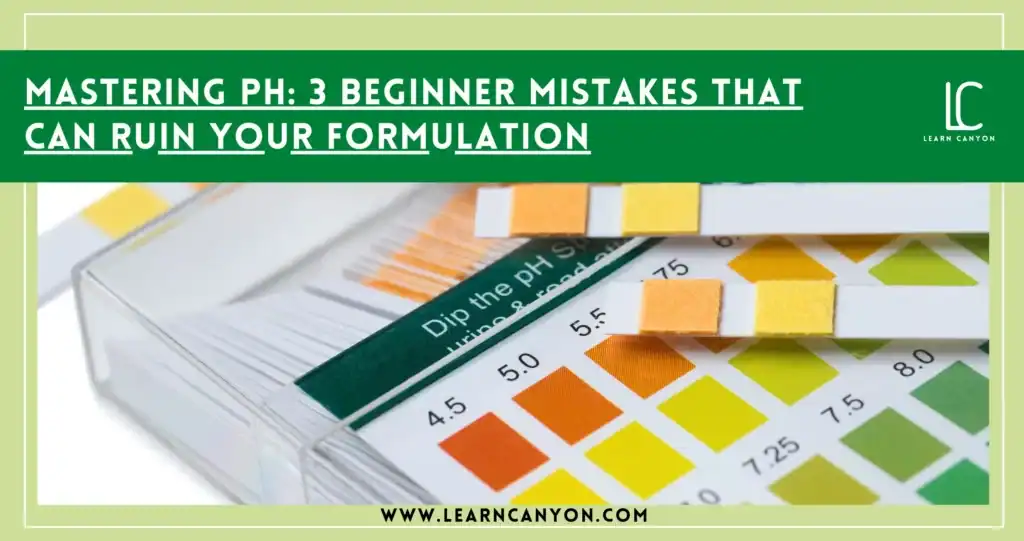



1 thought on “How to Professionally Formulate an Organic Anti-Aging Cream”
I’ve been looking for natural ways to keep my skin youthful, and this article has some great insights! Can’t wait to try formulating my own cream!